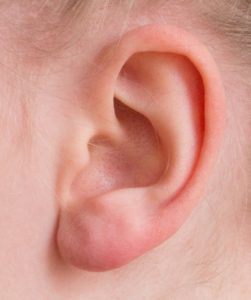 Method of ear reduction according to Di Martino (1856)
Method of ear reduction according to Di Martino (1856)
This ear correction is a wedge incision technique to reduce the size of ears that are too large.
Ear correction according to Ely (1881)
In the ear correction technique he described, Ely removed a spindle-shaped part of the pinna and fixed the pinna using a mastoid suture. The mastoid is the mastoid process, a bony part of the skull bone behind the ear, which is used for fixation in a whole range of methods.
Method according to Keen (1889)
With this method, ear placement was achieved for the first time by modeling the so-called anthelix (middle ear fold).
Method according to Morestin (1903)
A slight modification of Ely’s procedure was also used for his ear correction. A piece of cartilage was cut out for shaping.
Technique according to Goldstein (1908)
Goldstein fixed the cartilage of the auricle (concha) to the periosteum (of the mastoid) without removing any cartilage. This is known today as auricular rotation = concharotation.
Operation according to Luckett (1910)
He removed a spindle-shaped piece of cartilage from the auricle and sewed the edges of the cartilage together so that when the ear was closed, it lay flat and formed an anthelix fold.
Technique according to Davis and Kitlowski (1937)
They were the first to describe the use of needles soaked in paint to mark the anthelix fold to be formed. This is still often practiced today for ear correction.

 Method of ear reduction according to Di Martino (1856)
Method of ear reduction according to Di Martino (1856)